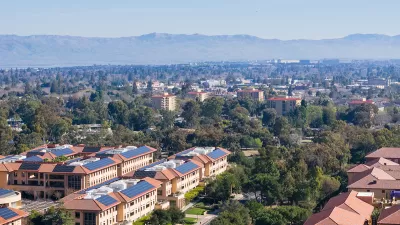Because of the coal power it displaces, solar and wind energy generated in the Mid-Atlantic, and Upper Midwest has an outsized impact.

A study from Lawrence Berkley Labs looked to quantify the impact of clean energy on public health, and the money saved by keeping those people healthy. "They examined how much wind and solar reduced emissions of four main pollutants — sulfur dioxide (SO2), nitrogen oxides (NOx), fine particulate matter (PM2.5), and carbon dioxide (CO2) — over that span of years," David Roberts reports for Vox. The study found that clean energy likely prevented 7,000 premature deaths saving 56 billion dollars. These savings are before accounting for CO2 reduction and the impact that would have for climate change.
The impact of clean energy is different in different regions of the U.S., "In California, wind and solar are mostly displacing natural gas. In the upper Midwest and mid-Atlantic regions, which rely more heavily on coal, wind and solar have greater impact," Roberts explains.
Finally, because tax rates in the U.S. are progressive and air is breathed equally by all people, funding clean energy is particularly equitable. "This is something that often gets lost in discussions of environmental regulations. It’s not just that their total benefits almost always exceed their direct costs. It’s that those benefits are uniquely egalitarian and progressive," Roberts argues.
FULL STORY: Wind and solar power are saving Americans an astounding amount of money

Study: Maui’s Plan to Convert Vacation Rentals to Long-Term Housing Could Cause Nearly $1 Billion Economic Loss
The plan would reduce visitor accommodation by 25,% resulting in 1,900 jobs lost.

North Texas Transit Leaders Tout Benefits of TOD for Growing Region
At a summit focused on transit-oriented development, policymakers discussed how North Texas’ expanded light rail system can serve as a tool for economic growth.

Why Should We Subsidize Public Transportation?
Many public transit agencies face financial stress due to rising costs, declining fare revenue, and declining subsidies. Transit advocates must provide a strong business case for increasing public transit funding.

How Community Science Connects People, Parks, and Biodiversity
Community science engages people of all backgrounds in documenting local biodiversity, strengthening connections to nature, and contributing to global efforts like the City Nature Challenge to build a more inclusive and resilient future.

Alabama: Trump Terminates Settlements for Black Communities Harmed By Raw Sewage
Trump deemed the landmark civil rights agreement “illegal DEI and environmental justice policy.”

Dear Tesla Driver: “It’s not You, It’s Him.”
Amidst a booming bumper sticker industry, one writer offers solace to those asking, “Does this car make me look fascist?”
Urban Design for Planners 1: Software Tools
This six-course series explores essential urban design concepts using open source software and equips planners with the tools they need to participate fully in the urban design process.
Planning for Universal Design
Learn the tools for implementing Universal Design in planning regulations.
City of Santa Clarita
Ascent Environmental
Institute for Housing and Urban Development Studies (IHS)
City of Grandview
Harvard GSD Executive Education
Toledo-Lucas County Plan Commissions
Salt Lake City
NYU Wagner Graduate School of Public Service



























